Wheel Size: 29’’; compatible with 27.5’’ rear wheel
Travel: 141 mm rear / 150 mm front
Geometry Highlights:
- Sizes Offered: P1, P2, P3, P4
- Headtube Angle: 64.5°
- Reach: 485 mm (size P3)
- Chainstay Length: 445 / 455 mm (Size P3, adjustable)
Frame Material: Aluminum
Price:
- Frame w/ Fox Float X Performance Elite: $2,389 / £1,889 / €2,089
- Complete Bike: $5,389 / £4,289 / €4,789
Wheel Size: 29’’; compatible with 27.5’’ rear wheel
Travel: 161 mm rear / 170 mm front
Geometry Highlights:
- Sizes Offered: P1, P2, P3, P4
- Headtube Angle: 64°
- Reach: 490 mm (size P3)
- Chainstay Length: 448 / 458 mm (Size P3, adjustable)
Frame Material: Aluminum
Price:
- Frame w/ Fox Float X2 Performance Elite: $2,479 / £1,979 / €2,179
- Complete Bike: $5,479 / £4,379 / €4,879
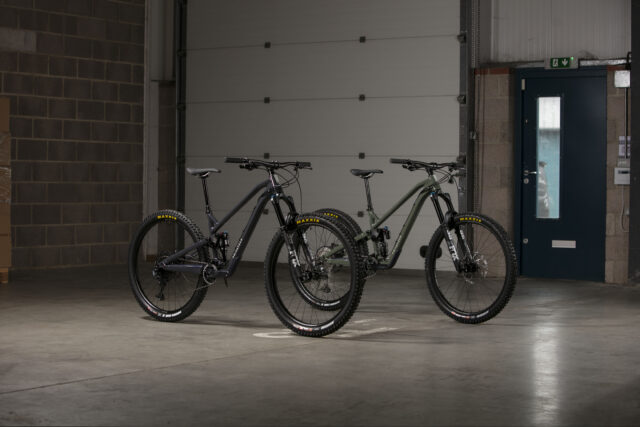
Intro
Privateer made quite a splash when they launched the original 161 back in 2020. It was a beefy, game-on Enduro race bike with notably progressive geometry and an astonishingly good build spec for the money, and it was hard to beat as an Enduro race bike if you’re on a tighter budget.
The shorter-travel 141 brought a lot of the same design ideas to a shorter-travel, more versatile package, and now Privateer is ready to unveil the second-generation versions of both bikes. We’ve already gone deep on a lot of the ideas behind their design with Dan Hicks, the engineer in charge of designing the new 141 and 161, on Ep. 192 of Bikes & Big Ideas — which you should absolutely listen to if you want to hear a very insightful peek behind the curtain on bike design from Dan — but now it’s time to share all the details.

The Frames
As with the Gen 1 bikes, the Gen 2 Privateer 141 and 161 share a nearly identical silhouette, though it’s changed a good bit from the original versions. Privateer hasn’t deviated from their Horst link suspension layout and a vertically-oriented shock, but the rocker link has gotten much smaller, the dropout pivot has moved higher, and the overall lines of the frame have changed a fair bit. The seat tube is now straight to allow full seatpost insertion, and while the tube shapes and forgings have changed a good bit, Privateer is (unsurprisingly) sticking to aluminum when it comes to the frame material.
The wheel size options have changed as well. On both the 141 and 161 V1, the “P1” sized frames were built around dual 27.5’’ wheels, while the P2, P3, and P4 were dedicated 29ers. On the Gen 2 bikes, all frame sizes use a 29’’ front wheel, with a flip chip at the seatstay / rocker-link pivot accommodating either a 27.5’’ or 29’’ rear wheel, leaving the geometry mostly unchanged (more on that below). A reversible bolt-on brake mount moves the caliper to match the two different settings, which means that you can toggle between the two settings without needing to replace any parts.
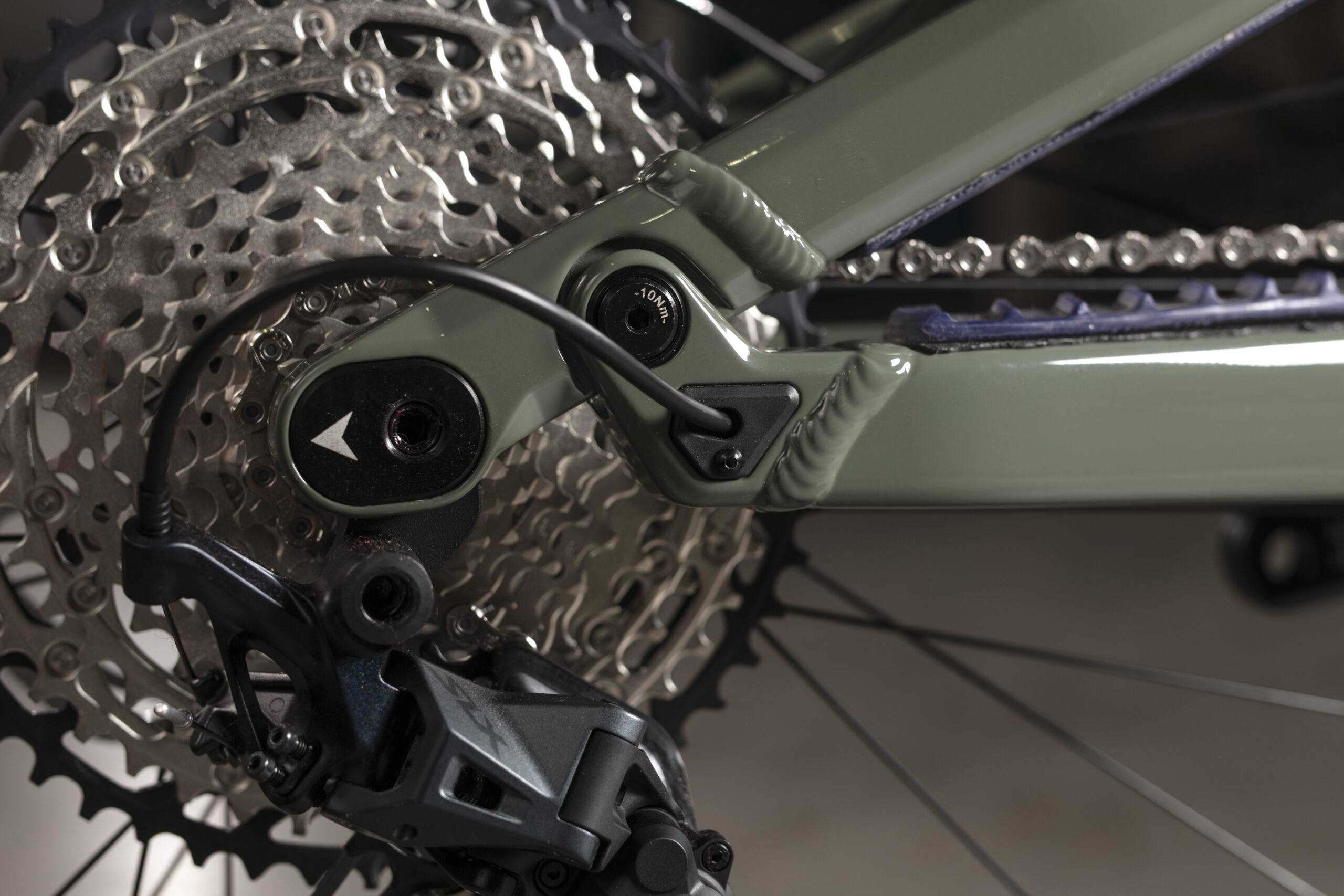
Both bikes have room for a water bottle and a tool mount inside the front triangle on all four sizes, and Privateer has kept things simple when it comes to the design details. They use a threaded bottom bracket shell, external cable routing with bolt-on clamps, and a replaceable set of ISCG tabs on both the 141 and 161. All the pivot hardware uses a single tool from just one side of the frame and features secondary seals to keep gunk out of the bearings. The main pivot bearings are huge 42mm-diameter full-compliment ones, and Privateer says that the 141 is built just as strong as the 161, but in a slightly more compact, more lively package.

Unsurprisingly, the 141 has 141 mm of rear-wheel travel, and the 161 follows suit with 161 mm. While those numbers carry over from the Gen 1 bikes, Privateer has made some big changes to the suspension kinematics. The overall philosophy is shared between the two bikes, but the details differ a bit. Let’s start with the 161:
Arguably the biggest change from the Gen 1 Privateer 161 to the new bike is its leverage curve. The original bike was reasonably progressive overall but had a slight digressive hump early in its travel, before peaking at about 2.63:1 at around 20 mm of travel and then falling off to about 2.17:1. The new Gen 2 Privateer 161 does away with that digressive portion early in the travel, and is much more progressive overall, starting at 3.6:1 and falling all the way to 2.2:1 in a mostly straight line (the progression tails off a tiny bit deep in the travel, but not by much).
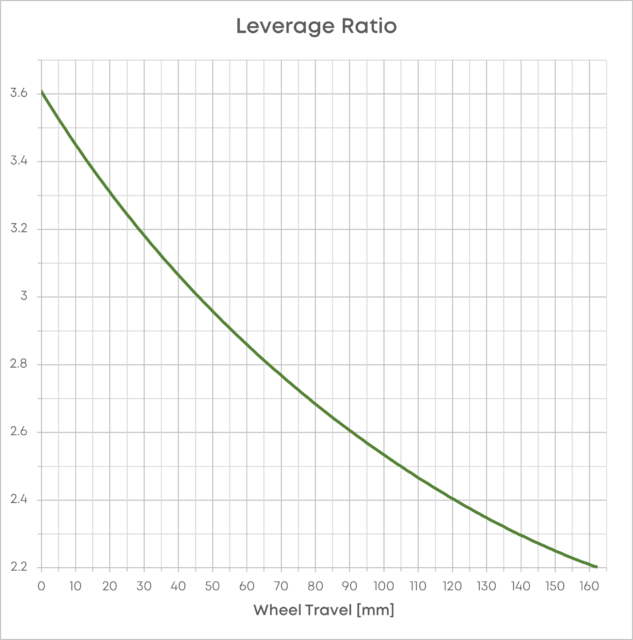
Privateer’s thinking is as follows: a more progressive leverage curve makes for better initial sensitivity and grip (not a particularly strong suit of the Gen 1 161 ) while providing good support deeper in the travel. By reducing the frequency of hard bottom-out events (and the frame’s reliance on a bottom-out bumper to mitigate them), they can reduce the number of really sharp loads delivered to both the frame and rider, making for a more comfortable, controlled ride and helping the frame last longer.
Given all that progression and the reduced need for a bottom-out bumper, Privateer has worked with Fox to develop custom-tuned shocks that use a very minimalist bottom-out bumper. Privateer’s take is that doing so makes for a more consistent and predictable feel and less abrupt change in the suspension deep in the stroke.
(Again, for much more on the thinking behind the Gen 2 bikes, check out Ep. 192 of Bikes and Big Ideas with Privateer Engineer Dan Hicks.)
Those numbers are with the stock 205 x 60 mm Trunnion-mount shock. The 161 can also be configured to have 174 mm of rear travel with a 65mm-stroke shock and is rated for a dual-crown fork if you want to go that route.
Privateer has also substantially increased the amount of anti-rise on the 161 frame, with the Gen 2 frame getting a very flat curve right around 90% through the whole travel range. That should keep the new bike’s chassis flatter and more stable under heavy braking than the prior-gen one, potentially at the expense of some suspension compliance while hauling on the rear brake. But the changes to the leverage curve are (presumably) going to make a massive change to the suspension performance as well, so it’ll be interesting to see how the combined package adds up on the trail.
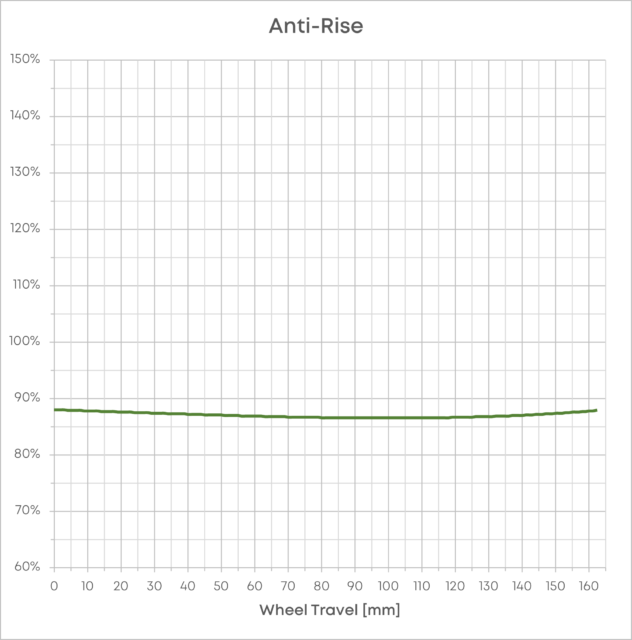
Finally, Privateer has dialed back the amount of anti-squat on the 161, with the Gen 2 bike getting a little over 110% at sag in a 51-tooth cog, with that figure increasing slightly with each step into a higher gear. The original 161 had an especially high amount of anti-squat and pedaled very efficiently when it came to grinding up smooth, steady climbs at a consistent cadence, but arguably felt a bit overkill in more varied, technical climbs. Its traction and compliance under power weren’t the best, and Privateer looks to have aimed for a more balanced setup here.
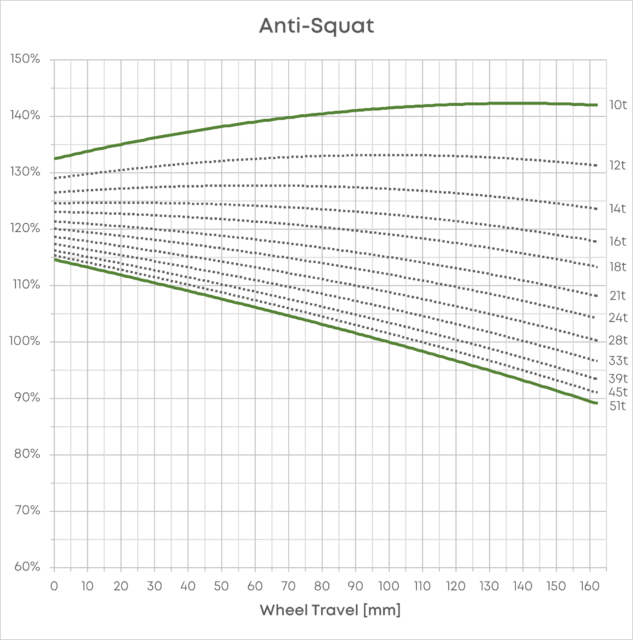
The Gen 2 Privateer 141’s kinematics are generally similar, though the progression in the leverage curve has been dialed back a little. It starts at about 3.3:1 and drops to 2.15:1, in a straight(ish) line that tails slightly flatter in the latter half of the travel. That gives the 141 a still-substantial ~35% total progression (as compared to ~39% on the 161). The difference in linkage progression might well be counteracted (or more than counteracted) by the fact that the 141 comes with a lower-volume air shock than the 161 (Fox Float X vs. a Float X2), but we’ll just need to get on them to find out. The anti-squat and anti-rise curves are nearly identical between the 141 and 161.
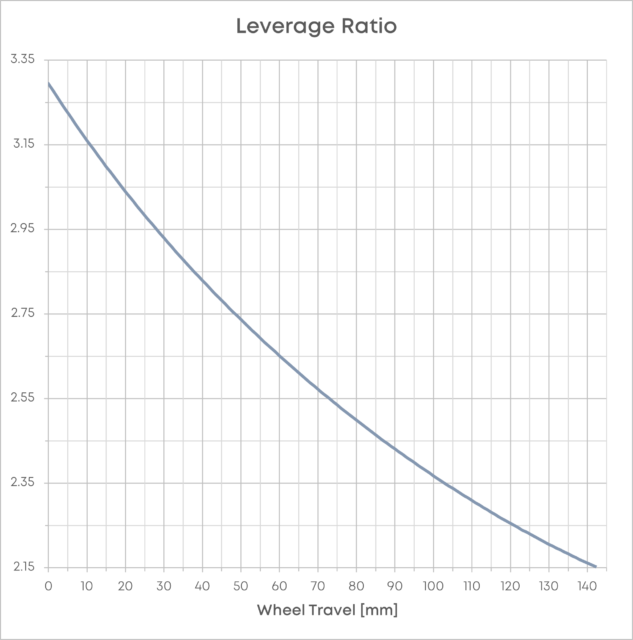
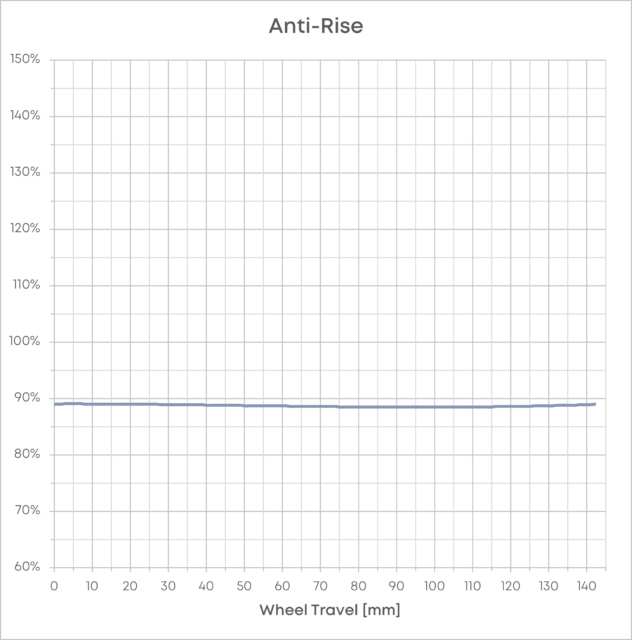
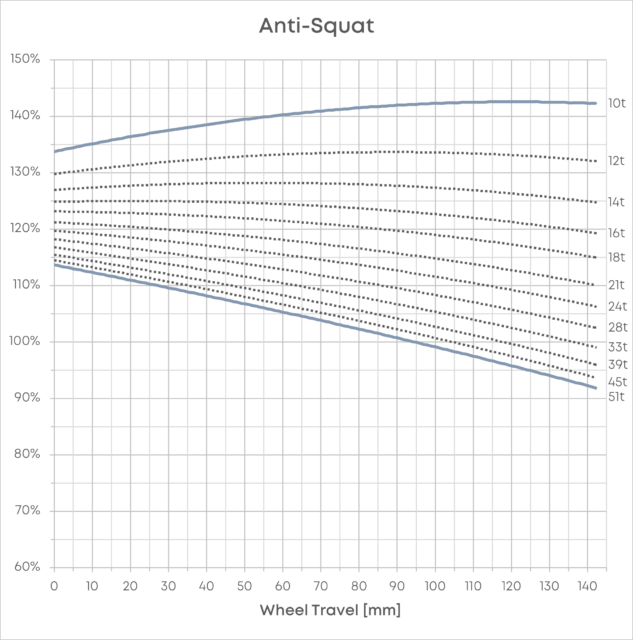
Fit & Geometry
Both the Gen 2 Privateer 141 and 161 frames are offered in the same four sizes as the original versions, labeled P1 through P4, and their geometry mostly hasn’t changed all that much, either. To keep things tidy, we’ll break down the two bikes one at a time.
Privateer 141
The 141 keeps the 64.5° headtube angle of the original, and the seat tube angle is still right around 78.5° (effective) as well; the actual angle has steepened by a degree, to 76.5°. Reach on the P1 frame has grown by 5 mm, to 445 mm, but the rest of the size range is unchanged, at 465 / 485 / 510 mm, respectively. Stack heights have grown a bit (the P3 is now a moderately tall 643 mm) but the changes there aren’t huge, either.
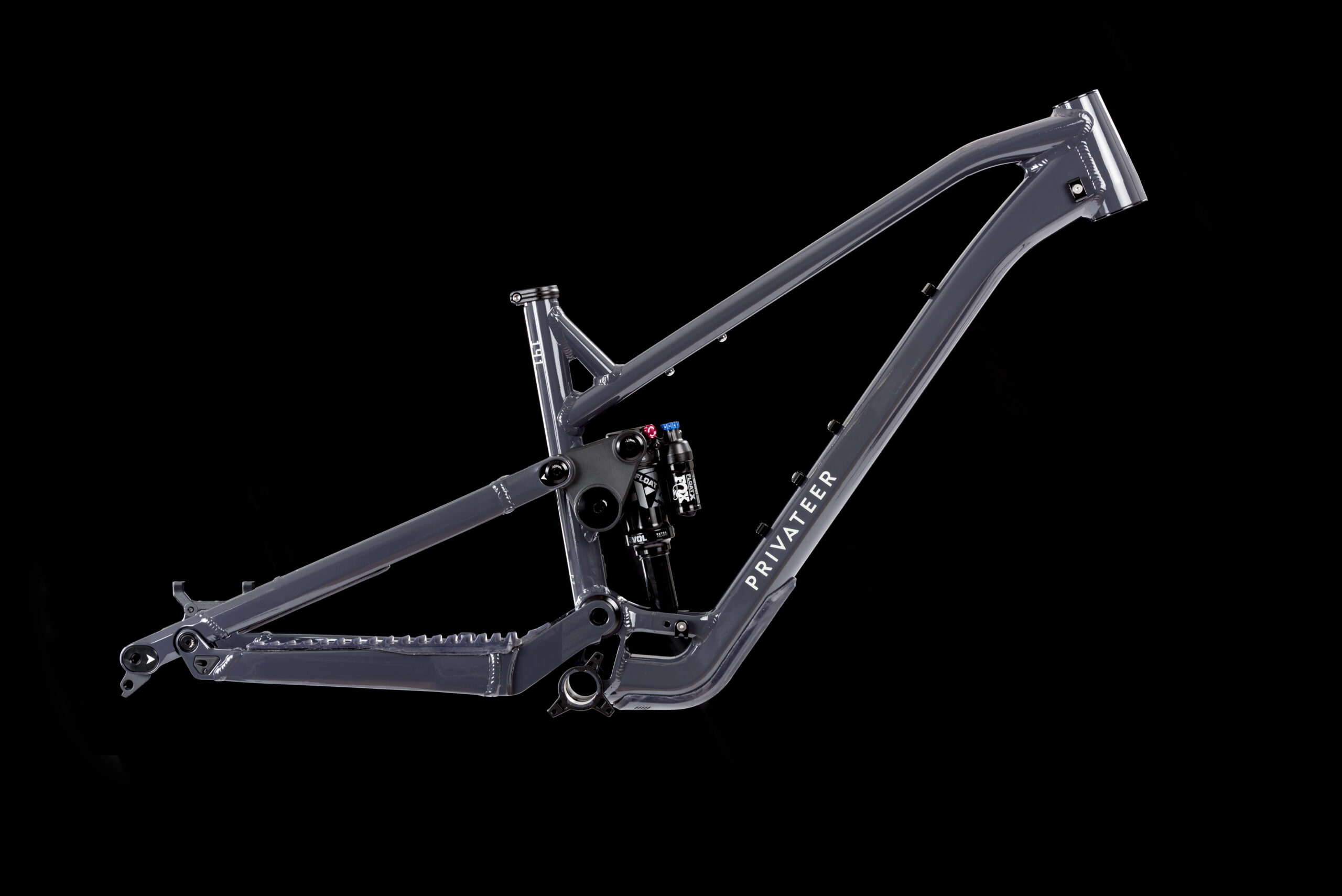
The biggest change on the geometry chart is the chainstay length, which is now adjustable. The P1 and P2 frames get the same 440 mm default length (when configured as 29ers), with the P3 growing to 445 mm and the P4 to 450. The alternate dropout flip chip setting lengthens things by 10 mm; flipping to the MX wheel setting shortens the stays by 3 mm, but leaves the other geometry figures unchanged. That puts the shorter setting in the same ballpark as the Gen 1 frames when comparing like sizes; the long setting is substantially longer.
Those are pretty aggressive numbers for a ~140mm-travel Trail bike, particularly the long chainstays, tall stack height, and steep seat tube. Privateer describes the 141 as being able to “hang with big travel bikes while remaining lively on more mellow terrain” which sounds like a generally apt description for a bike with those geometry and travel numbers.
Privateer 161
The 161’s geometry pretty closely resembles that of the 141, just stretched a little bit longer and slacker, as you’d expect, given its increase in travel. Its headtube angle is half a degree slacker, at 64°, its reach has grown by 5 mm per size (450 / 470 / 490 / 515 mm), and its seat tube angle is an ultra-steep 80° effective / 78° actual. That produces notably short effective top tube numbers, relative to the reach, with the P3 frame coming in at 607 mm. That’s all pretty much the same as the original version.
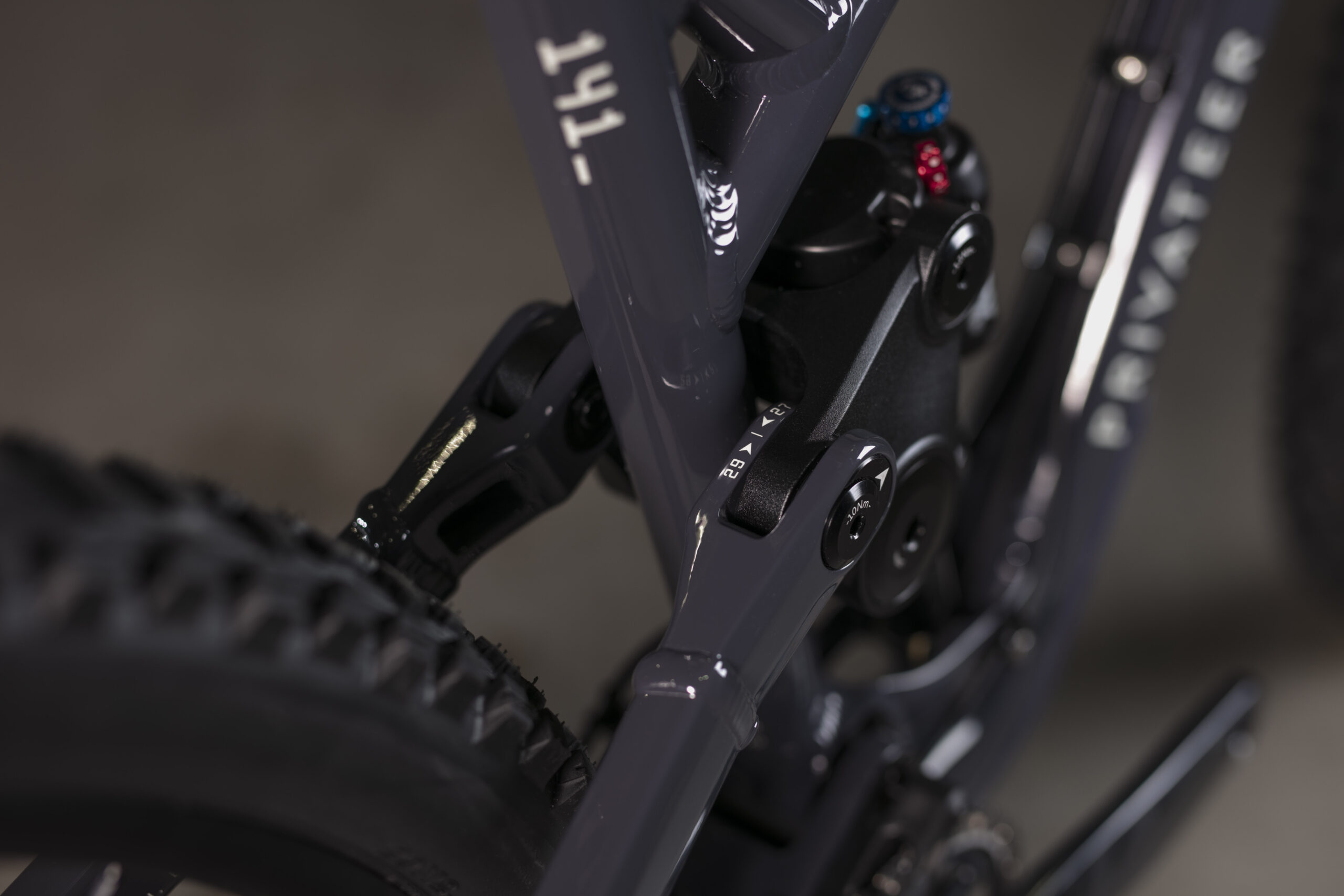
The stack height is a touch taller than either the new 141 or the original 161, at 652 mm on the Gen2 Privateer 161 P3. And like the new 141, the Gen 2 161 gets adjustable chainstays via a dropout flip chip, with the shorter setting measuring about the same as the Gen 1 bike, and the longer setting adding 10 mm. The P1 and P2 start at 443 mm, with the P3 growing to 448 mm and the P4 to 453 mm in the shorter setting with a 29’’ rear wheel. As with the 141, going to the MX wheel configuration lops 3 mm off the chainstay length, and the longer flip chip setting adds 10 mm.
For the most part, those are pretty normal numbers for a modern Enduro bike, though the stack height and chainstay length are both on the longer side of things — especially in the longer flip-chip setting — and the seat tube angle is notably steep. The tall stack and longer chainstays are both things we’re seeing more of on gravity-oriented bikes of late, so Privateer is on trend there. Reach and headtube angle numbers seem to have settled down of late, so will chainstay lengths and stack heights be the next front of the geometry revolution? We’ll see. (I think yes.)
The Builds
Privateer is offering a single build option each on the 141 and 161, at least for the time being. As you’d expect, given their emphasis on descending performance and value for money, both get high-end suspension and brakes, paired with solid but less fancy drivetrains, cockpit parts, and so on.
Size P1 bikes will come with a 27.5’’ rear wheel, while the three larger sizes all come stock with a 29’’ one (though again, all four frame sizes can accommodate either via the flip chip at the seatstay / rocker link pivot).
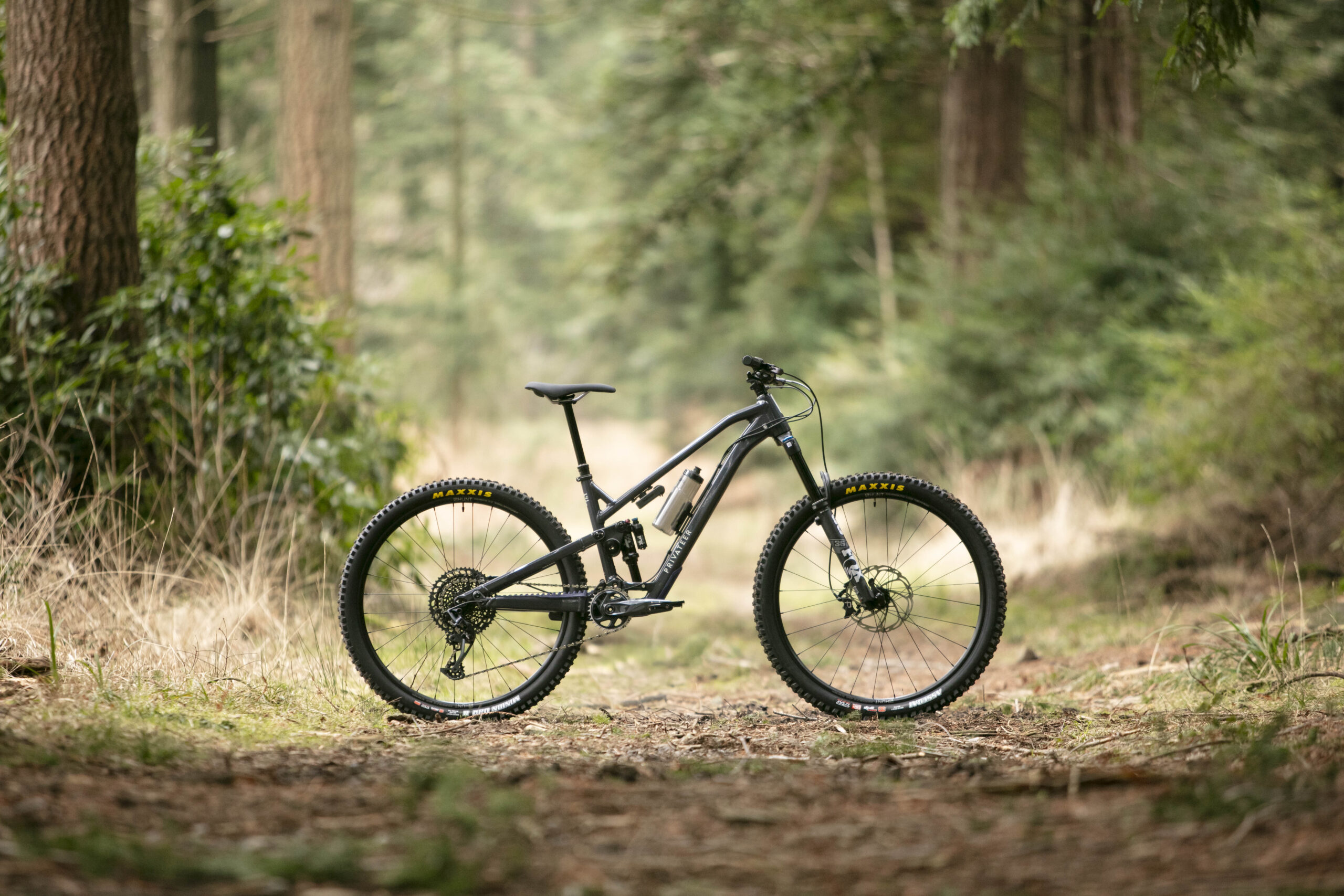
- Drivetrain: SRAM GX
- Brakes: Hayes Dominion A4 (w/ 203 mm front / 180 mm rear rotors)
- Fork: Fox 36 Performance Elite, 150 mm
- Shock: Fox Float X Performance Elite
- Wheels: Hunt Enduro Wide V2
- Dropper Post: OneUp V2
- Drivetrain: Shimano SLX w/ XT shifter
- Brakes: Hayes Dominion A4 (w/ 220 mm front / 203 mm rear rotors)
- Fork: Fox 38 Performance Elite, 170 mm
- Shock: Fox Float X2 Performance Elite
- Wheels: Hunt Enduro Wide V2
- Dropper Post: OneUp V2
[The specs listed above are for the UK / US versions of the builds; the EU-spec 161 gets a SRAM GX drivetrain instead of the Shimano one but is otherwise identical.]
I’m a big fan of what Privateer has done here. The Fox Performance Elite suspension packages are great bang-for-buck options, with nearly identical performance to the top-tier Factory versions, and the drivetrains are solid and functional without being flashy. The Hayes Dominion A4 brakes are still one of my favorite options out there, and the fact that they’ve put big 220 mm front / 203 mm rear rotors on the 161 is great, given the intended use of the bike.
Privateer isn’t messing around with the tire spec, either. The 141 gets a Maxxis Assegai MaxxGrip / Exo+ front tire with a DHR II MaxxTerra / DoubleDown rear; the 161 uses the same tread patterns but with a DoubleDown casing up front and a MaxxGrip / DH casing rear. I’ve lost count of how many times I’ve complained about bikes in this travel range / intended use class coming with Exo+ casings, and I’d be happy to get DoubleDowns at both ends; a DH rear is even better. Bravo.
Privateer says that frames will begin shipping the first week of May, and complete bikes by the end of that month. Complete bikes that are preordered before April 30th will get an extra rear wheel and tire in the non-standard size for their respective frame size (i.e., P1 bikes will get a spare 29’’ rear wheel, and P2–P4s a 27.5’’ one).
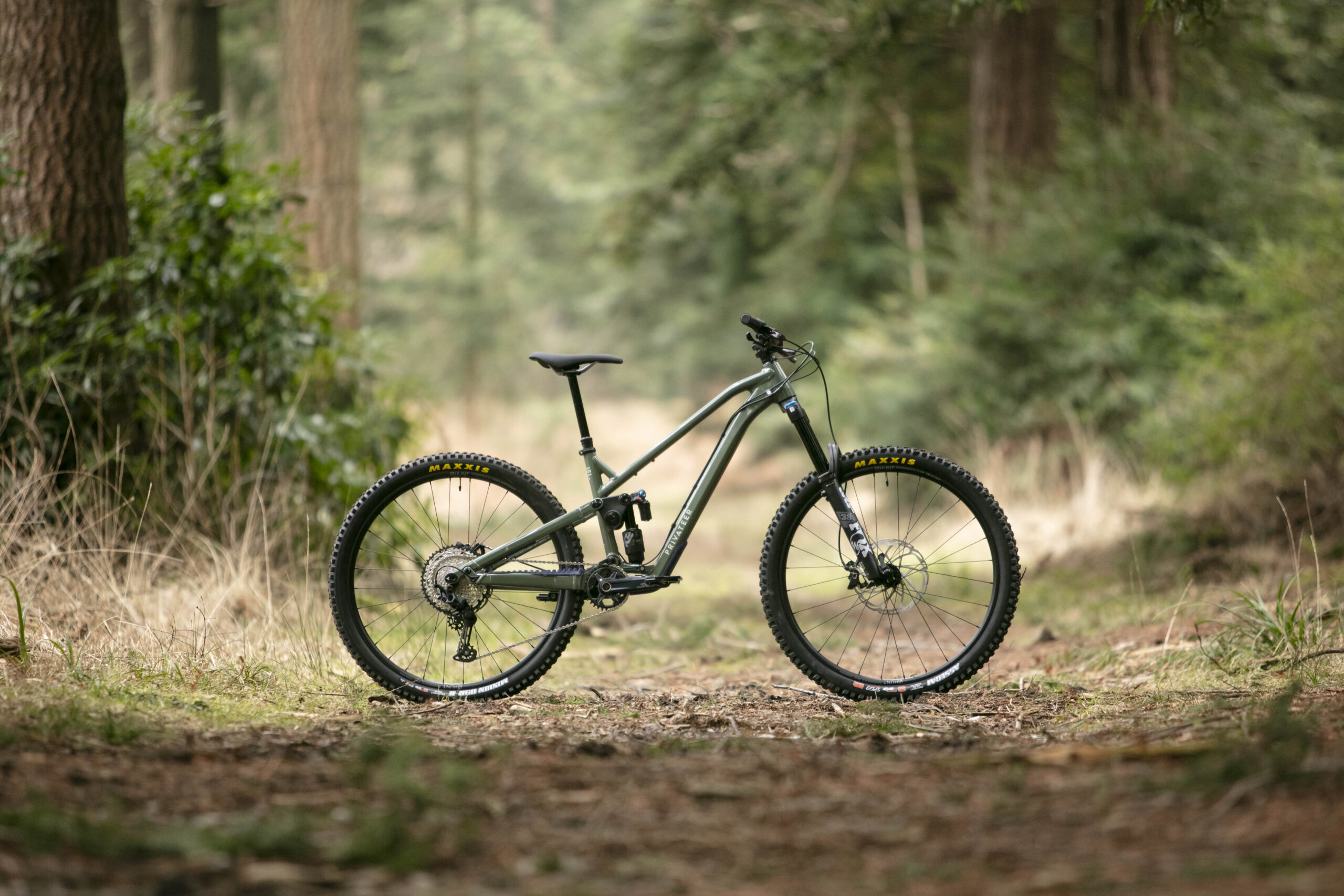
Some Questions / Things We’re Curious About
(1) How does the new 161 compare to the old one, and the current crop of modern Enduro race bikes in general?
(2) How versatile does the 141 feel? Is it a bike that’s largely going to appeal to more aggressive, more gravity-oriented riders, or will it be a good option for a wider swath of folks?
(3) And how does the suspension on the new 141 and 161 feel, with their ultra-progressive leverage curves and custom minimal bottom-out bumper shock spec?
Bottom Line (For Now)
The new Privateer 141 and 161 are compelling-looking bikes, with quite-progressive geometry, a whole lot of sensible design features, and excellent, well-priced build specs. We’ll be getting on the new 161 later this year, and are very much looking forward to it. Stay tuned for a full review to come.

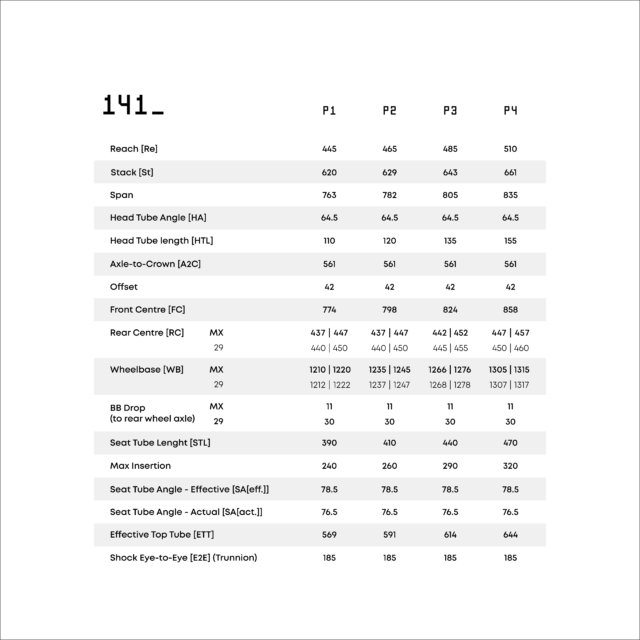
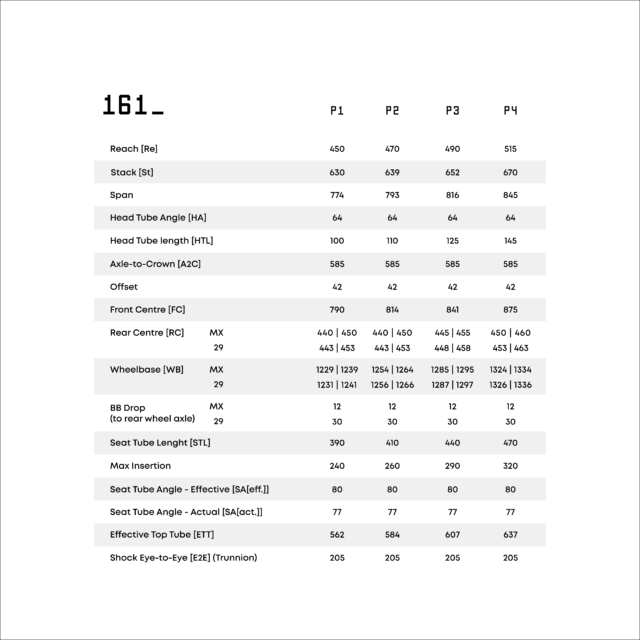
I absolutely love my gen 1 161 as a gravity bike. It rides like a tank, and is very much a point and go bike. It’ll just slam into whatever you’re aiming at and go up and over it. The added heft (I believe mine came in at 42lbs) honestly helps with that too. It’s an incredibly beefy frame that’ll just take hit after hit with no complaints. Chuck it down a rock garden, no problem. Whack a tree, still fine. The Hunt wheels are pretty strong too. My valve stem decided to let go one day on a techy park trail, and I was able to just ride out on the rim and my insert no problem. I snapped a couple spokes the other day at another park from a rock getting kicked up, and I was able to keep putting in laps on some of the chunkiest terrain in the area without any issues or damage.
For a primarily gravity bike, it seems pretty hard to beat the 161, and if the gen2 is as good as the gen1, then Privateer will have a killer rig on their hands.